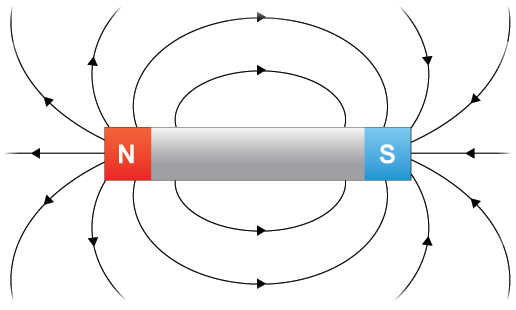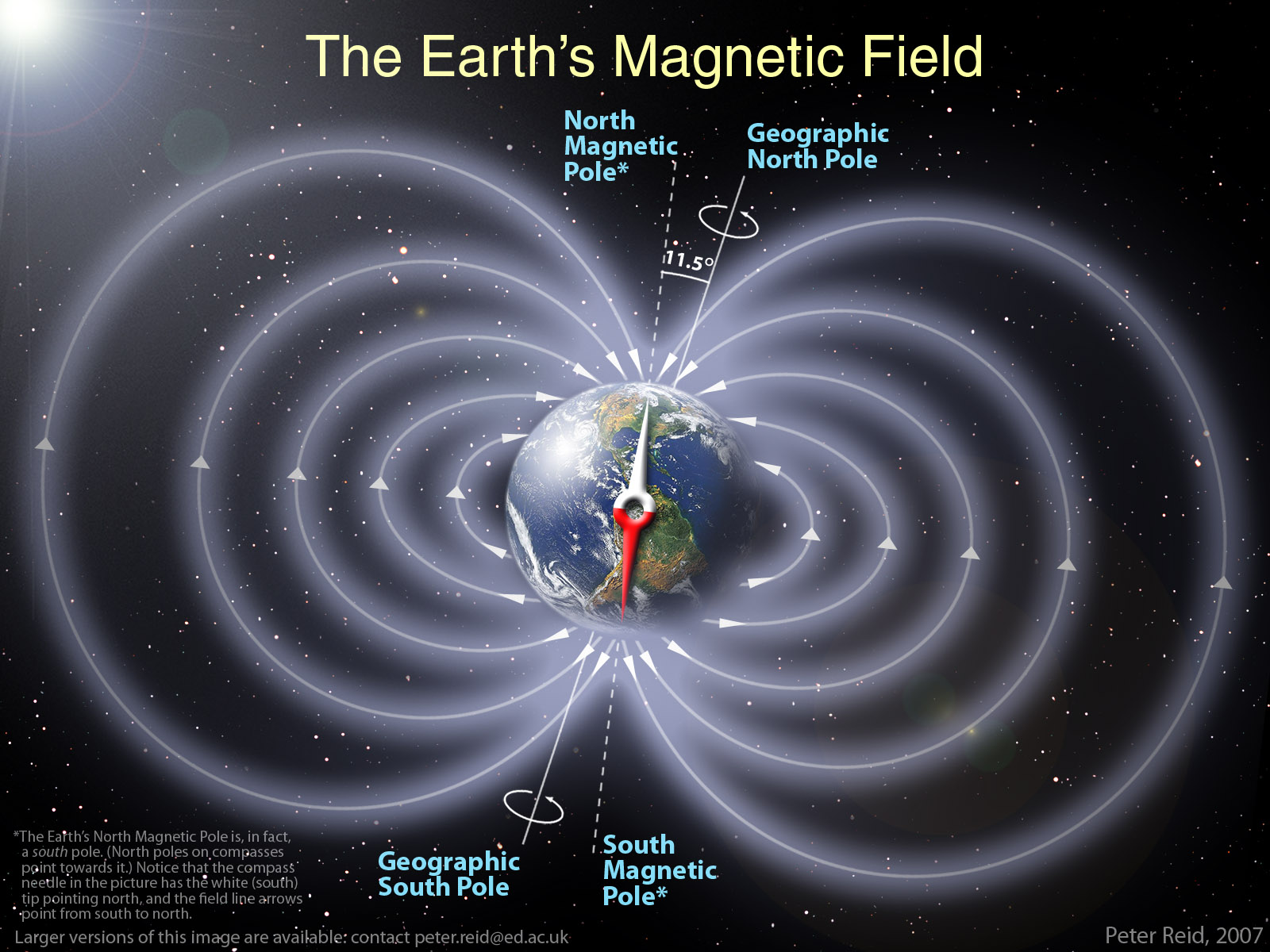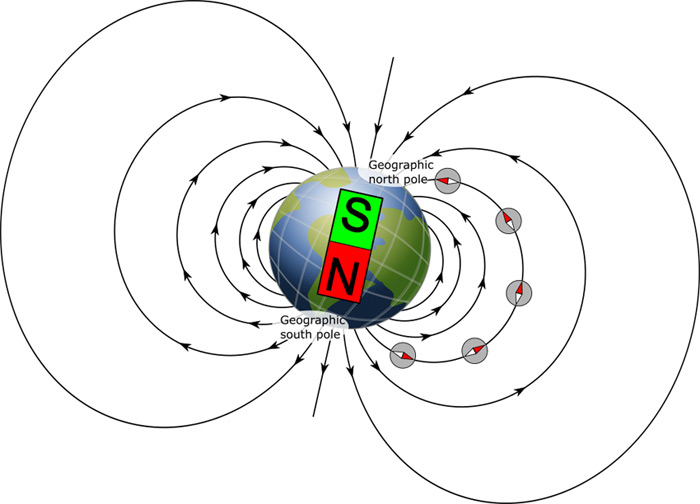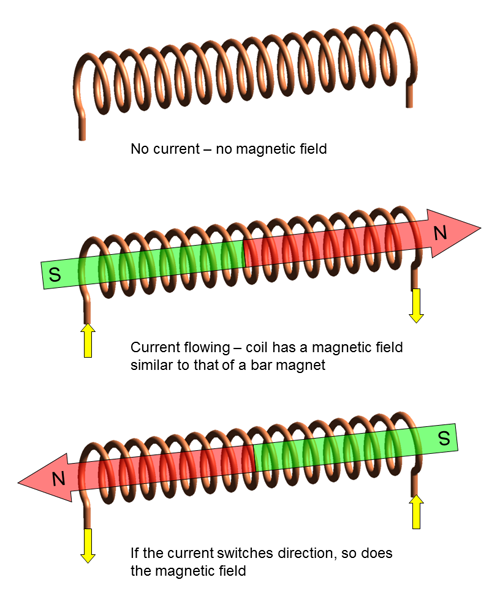Welcome to my first “Science Answers” post! About a month ago, I sent out a post requesting science questions from all of you; you can find it here. This post addresses the first of the questions I was asked. If you have a question, you can ask it in the comments here or on that post, or ask it in an email. Or find me on Facebook!
And by the way…I do apologize for getting this post out so late. But here you are.
Q: What is magnetism? And what’s the difference between electromagnetism and the “magnetism” found in minerals? (asked by Simon)
So…let’s start with something most of us are familiar with.

Can I just say, I’ve never seen a fridge with so many magnets?
Usually, the magnets in our lives serve practical purposes. In your typical household, these fridge magnets would be used to hold up notes, photos, recipes, etc. that you’d want to display in your kitchen.
(Of course, magnet collecting is a perfectly reasonable hobby, if the sheer variety on this fridge is any indication.)
Magnets are something we take for granted. But they are even more a part of our lives than we realize.
How many of you use an electric toothbrush?

Or mow your lawn?

Or use a computer? Or make toast for breakfast? Or store frozen food in your freezer? Or cook food in the oven? Or ring a doorbell? Or…turn on a light?
Wait, wait, wait. Just hold up a second. Aren’t we confusing magnetism with…electricity?
Nope. They’re not actually all that different.
Electricity is created anytime a magnetic field changes.
Now what the heck does that even mean?
Well, if you can get a magnetic field to fluctuate, then you’ll generate electricity.
But…what do I mean by a “magnetic field”?


Ever seen something like this?
If you’ve ever sprinkled iron filings onto a piece of paper and held it over a bar magnet like the one drawn above, you’ve seen something like the image on the left—the iron filings will line themselves up with the magnetic field produced by the bar magnet.
And that leads us into the difference between electromagnetism and the “magnetism” found in minerals…but I’ll get to that in a second.
(One thing, though. I put “magnetism” in quotes because there’s a misconception here…minerals are not magnetic, they are attracted to magnets. So yes, there’s a difference between electromagnetism, or any magnetism for that matter, and the attraction to magnets, exemplified by minerals. Which is what makes this such a good question.)
So. Let’s break this down. What exactly is going on in the image above?
It’s an interaction between the magnetic field produced by the magnet, and the iron filings we sprinkled. The magnetic field is produced by the motion of electrons, which are the small, freely moving parts of an atom—the building blocks of the universe.
In order to explain why magnetic fields exist and how they work, we need a deeper understanding of the physics involved here. We will come back to that in future posts.
For now, just understand that magnetism involves a magnetic field. An object is magnetic when it produces a magnetic field…and doesn’t need any help sustaining that.
For example…the Earth.

Earth has a magnetic field caused by the differential rotation of its inner and outer core—which basically means the solid inner core and molten outer core are rotating at slightly different speeds as the Earth itself rotates.
This diagram is a little bit misleading. It labels the magnetic pole near geographic north as the “north magnetic pole,” and the magnetic pole near geographic south as the “south magnetic pole.”
That’s not accurate. Right now, the magnetic pole near geographic north is actually magnetic south, and vice versa. It’s why the north end of the magnet in a compass points north.
It’s attracted to the Earth’s magnetic south pole…which is positioned up north of Canada, near the geographic north pole.

Now, the Earth will retain its magnetic field so long as its core keeps rotating differentially. It’s a “permanent” magnet. But then there are “temporary” magnets—or electromagnets.
Electromagnetism, to address the second part of the question above, is when electricity is used to turn an object into a magnet. Remember how I said that electricity and magnetism are linked? They even combine to form their own special branch of scientific study—electromagnetism.
Electromagnets are handy because they can be turned on or off with the flip of a switch.

Turn on the electrical current through the coil of wire, and you have a magnet. Switch the direction of the current, and you switch the poles of the magnet.
Electromagnets are everywhere. They power motors, generators, MRI machines, even headphones. Any magnet that turns on and off is an electromagnet, because it needs electricity to work—hence the electro- prefix.
So…magnetism is when an object has a self-sustaining magnetic field. Electromagnetism is a magnet than can be turned on and off. So what about the third part of the question—how do minerals fit in to all of this? I mean, some of them have magnetic properties.
Minerals are not magnets. Let’s get that straight.
Remember above, when I gave you the example of the iron filings? That’s the basis of your answer. And at that point, I also mentioned that there’s a difference between having a magnetic field (and being magnetic), and being attracted to a magnetic field.

Iron filings are attracted to magnetic fields. Iron is the reason why certain metallic minerals are also attracted to magnetic fields. Steel, which is an alloy of iron, is what fridges are made of–no wnder magnets stick!
Minerals—those attracted to magnetic fields—are not magnetic in themselves. There are two types of magnetism among minerals.
Paramagnetic—these metals, semimetals, and even nonmetals become “magnetized,” or form a magnetic field of their own, when they touch a magnetic field.
Ferromagnetic—some paramagnetic minerals stay magnetized even after the magnetic field is removed. But heat it up above a certain temperature—known as its Curie temperature, and different for different minerals—and it’ll lose its magnetism.
Paramagnetic and ferromagnetic minerals sort of “chum up” with the magnet that touches them. It’s like they’re jealous of its magnetism and decide to join the team. Once they are magnetized, they attract toward the magnet. Materials that are not minerals have a very different reaction.
These are called diamagnetic, and they too turn themselves into “temporary” magnets. But they certainly don’t join the team. They magnetize only long enough to repel the unwanted magnetic force, and soon enough are back to normal again.
So, if anyone reading this thinks I’ve gotten any of this wrong, feel free to let me know. I’m still a little unclear on paramagnetism, ferromagnetism, and diamagnetism myself. But I hope this at least clears up the basics.
Thanks for the question, Simon! If there’s anything else I can clear up, please let me know! On Wednesday, I’ll address your question about gravity.